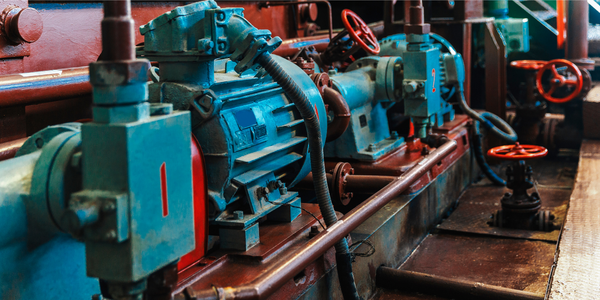What do I do with old industrial equipment?

What you do with old equipment comes down to two possibilities: either you replace it, or you keep it around. The route you choose depends on your facility’s current demands.
Deciding to Replace Old Assets
Some factors you’ll want to consider include:
- The amount of downtime that results from the asset
- The costs of repairs versus replacement
- Impacts replacement might have on other parts of your operations
- Safety issues
- Criticality of the asset
Many of these are cost issues. An asset with minimal impact on your operations would be lower priority, and therefore wouldn’t necessarily need to be replaced right away. On the other hand, if its inefficiency is causing a bottleneck in your process, you’ll probably want to look at an upgrade.
If it has reached its useful life, it may be time to sell it off or scrap it since you probably won’t gain any more tax benefits from it. On the other hand, those benefits may be inconsequential when compared to the costs of replacement. Again, weigh the costs and see whether replacement makes sense.
Getting Rid of Old Assets
Now, let’s suppose you decide to replace it. What do you do with the old model?
You have a few possibilities:
- Online auctions – These can be a great way to get rid of old equipment, especially if it’s still in useable condition.
- Second-hand distributors – Industrial equipment manufacturers and distributors often buy second-hand equipment, though you probably won’t get as much out of the sale since they’ll be trying to turn a profit.
- Listing in trade magazines – Listing an ad in a magazine can help you sell off old assets, but it works best if you choose the right publications.
- Use a broker – They’ll take a commission on the sale, but brokers have numerous connections and could get your old equipment sold.
- Donate it – Some pieces of equipment can be donated to charitable causes for tax purposes.
- Scrap/recycle it – You’ll get minimal return for it, but recycling old equipment is better than nothing.
The ideal options would be to auction it or list it yourself, but barring those, it’s better to get something for your old equipment than to simply let it sit in a corner of your facility.
Want to keep reading?
How Can I Manage Asset Life Cycle to Reduce Total Cost of Ownership?
Equipment Maintenance - What Is Equipment Maintenance?
Equipment Maintenance Log [Template & Benefits]
4,000+ COMPANIES RELY ON ASSET OPERATIONS MANAGEMENT
Leading the Way to a Better Future for Maintenance and Reliability
Your asset and equipment data doesn't belong in a silo. UpKeep makes it simple to see where everything stands, all in one place. That means less guesswork and more time to focus on what matters.

![[Review Badge] Gartner Peer Insights (Dark)](https://www.datocms-assets.com/38028/1673900494-gartner-logo-dark.png?auto=compress&fm=webp&w=336)
